Kia Rio Review
There are three basic ways you can build a low-priced automobile. You can use lower-cost materials (and workforce). You can limit the standard features. Or you can keep variations to a minimum. When making the Rio, one of the lowest priced cars sold in American, Kia employed all three strategies. Is that a good thing? It depends entirely on where you draw the line between “cheap” and “inexpensive.”
In terms of looks, let’s go with inexpensive. As you might expect, the Rio is a blend of every styling cue known to man; from a Ford front grill with Honda Fit-style supersized headlights, to an Audi-esque rear pillar, to a vaguely Volksy rear. Strangely, it works. The only external indication that the car costs chump change is its Gallic “ass in the air” stance and the fact that the teeny tiny 14” wheels fail to fill up the teeny tiny wheel arches. It’s not what you’d call a compelling design, but neither does it scream blue rinse brigade like the Toyota Corolla– which the Rio also sort of maybe kinda resembles.
Inside, you’re greeted by a surprisingly handsome two-tone color scheme, which is especially not completely unattractive in beige. The best and only important thing you can say about the switchgear and controls is that they’re all present and accounted for, positioned exactly where you’d expect them to be, doing precisely what they should be doing. The jumbo-sized, sprocket-shaped seat control knobs are a nice touch in a cabin otherwise (and unsurprisingly) devoid of nice touches. But the best news is that there’s plenty of room in driver’s throne. My 6’3” carcass slotted behind the wheel without short or long term injury.
The rear seat, however, is a whole ‘nother story: How My Teenage Child Lost His Legs in a Kia. With the front seat adjusted to accommodate anyone taller than Tom Cruise, rear leg room is literally nonexistent. Compounding matters, the rear seat squab is made from Nerf balls; the seat immediately collapses along the edge when you put weight on it. Despite the two-seaterness of the thing, the Rio’s interior is fairly nice for a car in this price class, and light years ahead of anything GM offers in an entry level car (I’ve got an Ion you).
The Rio is somewhat motivated by a 1.6-liter 110hp four-banger. Obviously, the car’s target audience only needs to know two things: mileage (32/35 with a five-speed manual) and reliability (a five year, 60k mile bumper-to-bumper warranty says relax). Rio intenders may also be interested to hear that the Rio’s engine at full throttle makes it just about impossible to hear. Think of it as a fuel economy measure; penny pinchers will keep their foot off the throttle just to reduce the noise levels below that of a Cessna during take off. At least the Rio’s engine roar helps drown out some of the road noise from the skinny tires.
The zero to sixty amble takes forever. The handling is… what are you nuts? It doesn’t fall over, and anyone who manages to generate enough speed to make the Rio’s tires squeal gets what they deserve. OK? Let’s stay focused here.
Rio buyers choose between two trim levels (for some reason, Kia treats the hatchback Rio5 as a separate model). The base Rio– which dealers stock in small numbers to advertise ultra-low prices– clocks in at a little above $11K. You get a manual transmission, no radio or AC and manual windows (remember them?). For roughly $2K more, you get a chiller and tunes, power steering, tilting steering column and fold-down rear seats that add capacity to the spacious trunk. Add the $600 “power package” and you get power windows, locks and mirrors. An autobox’ll run you another $850. By now, you’re in the mid-teens, bumping into the lower end of the price range of larger, better-equipped cars, both new and “recently loved.”
This creates a quandary. If you need basic, fuel-sipping transportation for commuting or a reasonably safe first car for your teen, and you must have a new car, and can live without automatic transmission, power gadgets and AC, the base Rio’s price, full array of air bags and excellent warranty make it worth a look. If like most drivers, you want AC and automatic transmission along with the convenience of locking all your doors and adjusting your mirrors without playing Twister, you’ll have to go to the more expensive LX. At that price your selections broaden to late model Civics and Corollas, new Fits and Yaris’ and clearance-priced American-brand intermediates. When you throw the Rio into that mix, the warranty is the only thing in its favor. Unfortunately for Kia, when compared to these “inexpensive” cars, the “low cost” Rio comes off as “cheap.” So now you know.
More by Frank Williams
Latest Car Reviews
Read moreLatest Product Reviews
Read moreRecent Comments
- ToolGuy I was challenged by Tim's incisive opinion, but thankfully Jeff's multiple vanilla truisms have set me straight. Or something. 😉
- ChristianWimmer The body kit modifications ruined it for me.
- ToolGuy "I have my stance -- I won't prejudice the commentariat by sharing it."• Like Tim, I have my opinion and it is perfect and above reproach (as long as I keep it to myself). I would hate to share it with the world and risk having someone critique it. LOL.
- SCE to AUX Sure, give them everything they want, and more. Let them decide how long they keep their jobs and their plant, until both go away.
- SCE to AUX Range only matters if you need more of it - just like towing capacity in trucks.I have a short-range EV and still manage to put 1000 miles/month on it, because the car is perfectly suited to my use case.There is no such thing as one-size-fits all with vehicles.



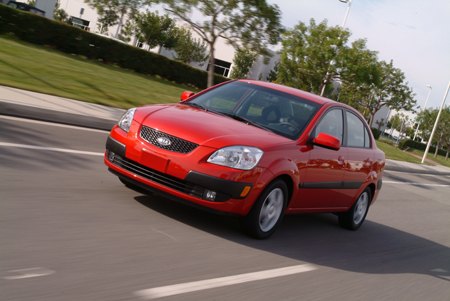



















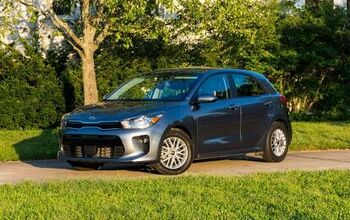


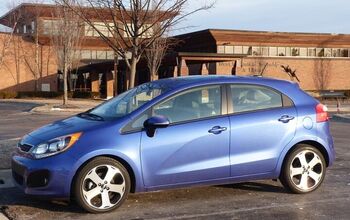



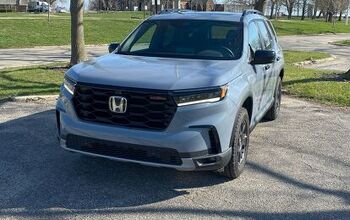

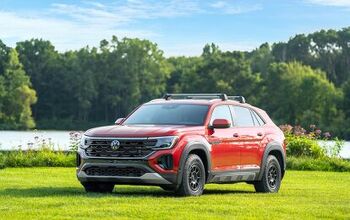




Comments
Join the conversation
Nice writeup, Frank. We came to the same conclusion: I couldn't imagine spending $14k for a loaded Rio, in this age of easy credit and CPO vehicles you can get so much more for the same dollar. My first car had crank windows, I like them on vintage cars or entry level models. Adds character and charm. :-)
READ ABOUT MY ACCIDENT IN A KIA RIO. In 2003, I purchased a Kia Rio Cinco, the wagon, which is now called Rio 5. I paid the car off in April of 2008. On June 2, 2008, I was the 3rd car hit in an 8 car accident. The accident happened on a 6 lane highway going the freeway speed limit in NJ - NOT SLOW. The 1st hit was in the rear passenger door in such a way that my car immediately went into a 360 degree spin. A second car hit the rear passenger door on the drivers side as it spun into the lane to my right. The second hit spun me again in the opposite direction and the front of my car I believe hit another car. The car was totaled, but none of the inside passenger area was damaged at all. I WALKED AWAY FROM THAT ACCIDENT AND WENT TO WORK THAT DAY. I left work early of course and went to the hospital to be examined. No injuries!! KIA has won numerous awards for safety and consistently maintains 5 star awards for safety even on the Rio. God and that KIA saved my life on June 2, 2008. With gas prices at or above $4.00 a gallon. Guess what I bought yesterday, a 2006 Kia Rio. I already know about the great gas mileage and have experience with the safety. So the purchase was a no brainer. This is my 3rd Kia. I had the 2001 Sportage also. I still don't have power windows & doors, but thank God my lazy butt is still alive to reach over and roll down the windows and unlock the doors. It's an automatic and I do have air and a banging stereo system, which I had in the 2003 Rio. When I buy a car, it's based on dependability, initial purchase price and cost of maintenance and parts over the life of the car and durability. Value is important. I still have to eat after buying the car. Not to mention the 28 city/38 hw mpg and great pick up for entering the highway without having to floor the gas pedal. The cabin of the 2006 Rio is a lot quieter than the 2003 that I just lost. I test drove the base model 2008 RIO which now comes standard with the power package (windows & door locks) and the stereo has the aux connection for the iPod. I LOVED IT, but I don't want to pay over $15,000 for a car since I just paid off my other car a couple months ago. I was looking forward to being car note free for at least 3 years. :-( If I ever need a more expensive car just to show off to my friends/family who aren't paying for it any way. I'll just bump up to the more expensive KIA Optima or Amanti. I LOVE MY KIAs and no I don't work for or have any affiliation with KIA Motors.